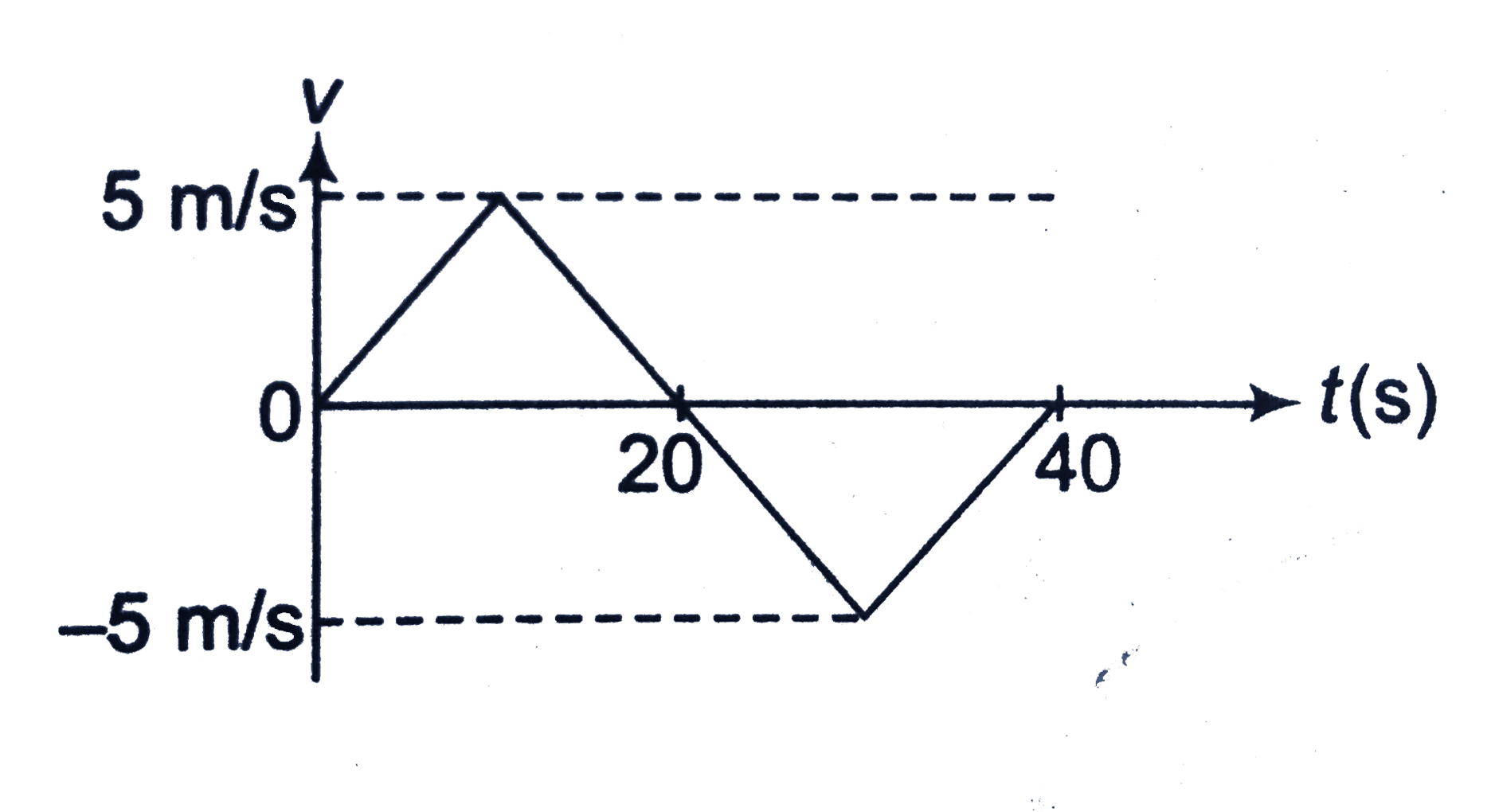A particle starting from rest moves with constant acceleration. If it takes 5.0 s to reash the speed 18.0 km/h find a. the average velocity during this period, and b. the distance travelled by the particle during this period.Solution in Tamil
The correct Answer is:A, B
Given, .
Topper's Solved these Questions
- REST AND MOTION : KINEMATICSBOOK - HC VERMACHAPTER - REST AND MOTION : KINEMATICSEXERCISE - Objective -2
10 Videos
- PHYSICS AND MATHEMATICSBOOK - HC VERMACHAPTER - PHYSICS AND MATHEMATICSEXERCISE - Exercises
34 Videos
- ROTATIONAL MECHANICSBOOK - HC VERMACHAPTER - ROTATIONAL MECHANICSEXERCISE - Exercises
86 Videos
Similar Questions
Consider the motion of the tip of the minute hand of a clock. In one hour
View SolutionA vector →A makes an angle of 20∘and→B makes an angle of 110∘ with the X-axis. The magnitude of these vectors are 3 m and 4 m respectively.Find the resultant
View SolutionA wheel is making revolutions about its axis with uniform angular acceleration. Starting from rest, till it reaches 100 rev/sec in 4 seconds. Find the angular acceleration.
View SolutionThe distance travelled by a particle in time t is given by s=(2.5ms2)t2. Find a. the average speed of the particle during the time 0 5.0 s, and b. the instantaneous speed ast t=5.0 is
View SolutionFrom the velocity time plot shown in figure find the distance travelled by the particle dureing the first 40 seconds. Also find the average velocity during this period.

View SolutionFrom the velocity-time plot shown in Fig. find the distance travelled by the particle during the first 40s. Also find the average velocity during this period.

View SolutionA particle starting from rest has a constant acceleration of 4m/s2 for 4 s. It then retards uniformly for next 8 s and comes to rest. Find during the motion of particle (a) average acceleration (b) average speed and (c) average velocity.
View SolutionA car acquires a velocity of 72 km//h in 10 seconds starting from rest. Find (a) the acceleration (b) the average speed ( c ) the distance travelled in this time.
View SolutionA particle starts from rest and moves with a constant acceleration of 4m/s2 for 10s, then it moves under constant seceleration and stops in 20s. Find (a) the maximum velocity attained by the particle (b) the total distance traveled and (c ) the distance/distances from the origin, when the particle is moving at half the maximum velocity.
View Solutionएक सरल रेखा पर चलते एक कण वेग - समय ग्राफ चित्र में दिखाया गया है | प्रथम 40 s में कण द्वारा चली दुरी निकालें | इस अवधि में कण का औसत वेग भी निकालें |

View Solutionविराम अवस्था से प्रारम्भ कर एक कण एकसमान त्वरण से चलता है और 5.0 s में 18.0 km/h का वेग प्राप्त कर लेता है | ज्ञात करे, (a) इस अवधि में औसत वेग (b) इस अवधि में कण द्वारा चली गई दुरी |
View SolutionA particle starts from rest and moves along a straight line with uniform acceleration. The ratio of distance travelled by the particle during the first three seconds to the distance travelled by the particle during the next three seconds is 3 о 2
View SolutionA particle starts from rest and moves along a straight line with uniform acceleration. The ratio of distance travelled by the particle during the first three seconds to the distance travelled by the particle during the next three seconds is 3 о 2
View SolutionThe distance travelled by a particle in time t is given by s=(2.5)t^(2) .Find (a)the average speed of the particle during the time 0 to 5.0s, and (b)the instantanous speed at t=5.0s. Here s is in metres.
View SolutionThe distance travelled by a particle in time t is given by s=(2.5ms2)t2. Find a. the average speed of the particle during the time 0 to 5.0 s, and b. the instantaneous speed ast t=5.0 is
View SolutionFrom the velocity time plot shown in figure find the distance travelled by the particle dureing the first 40 seconds. Also find the average velocity during this period.

View Solution
